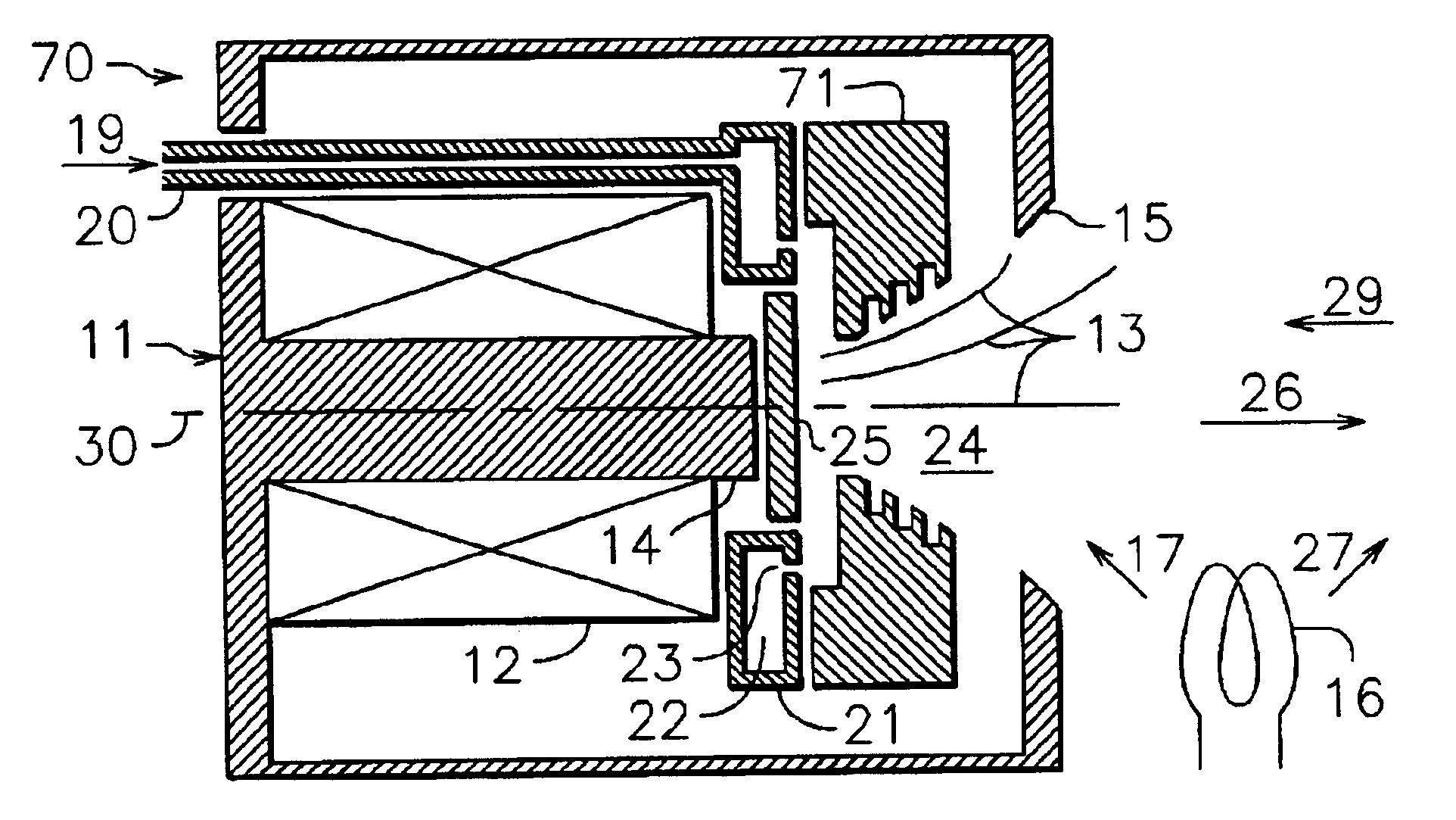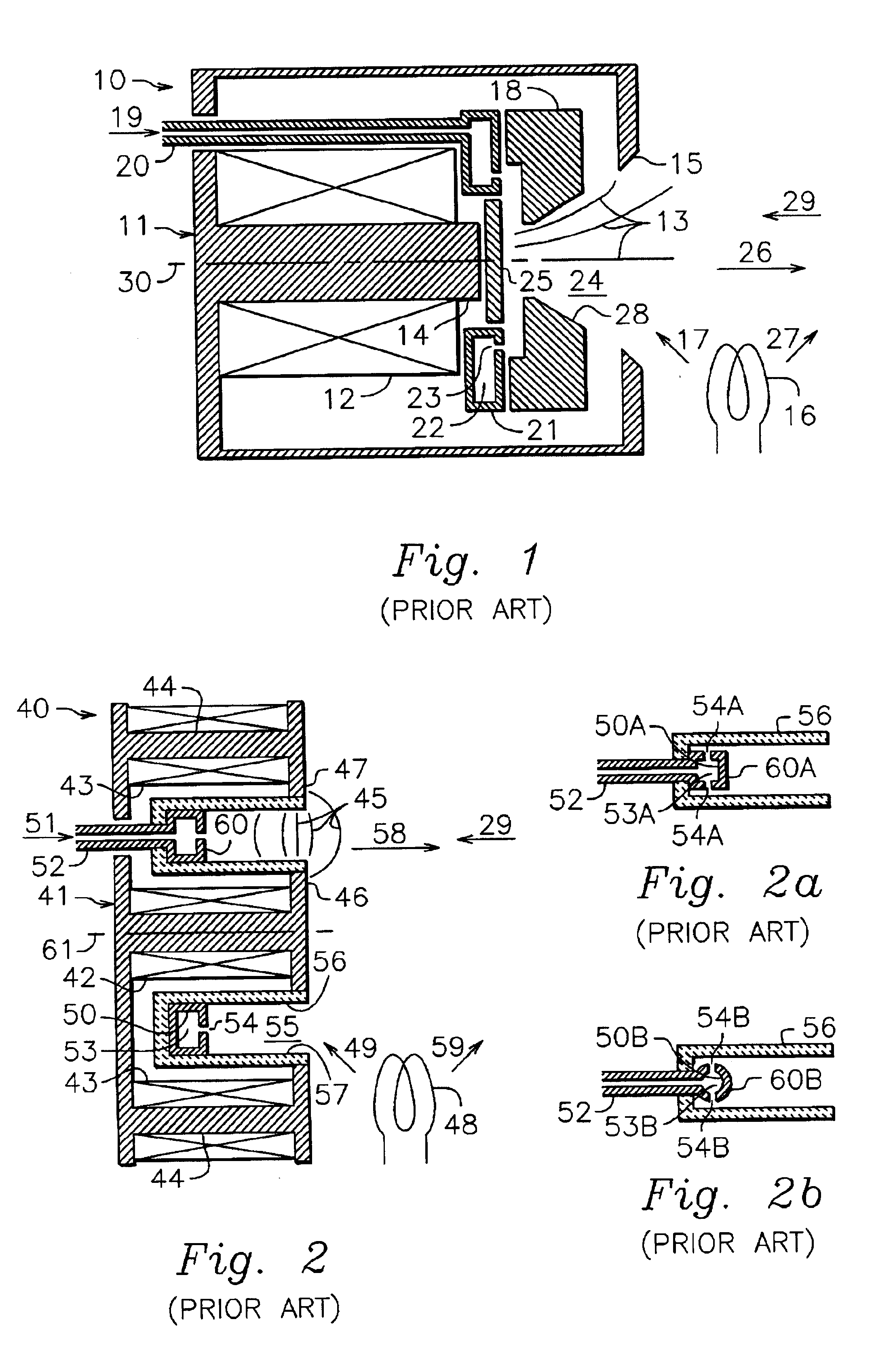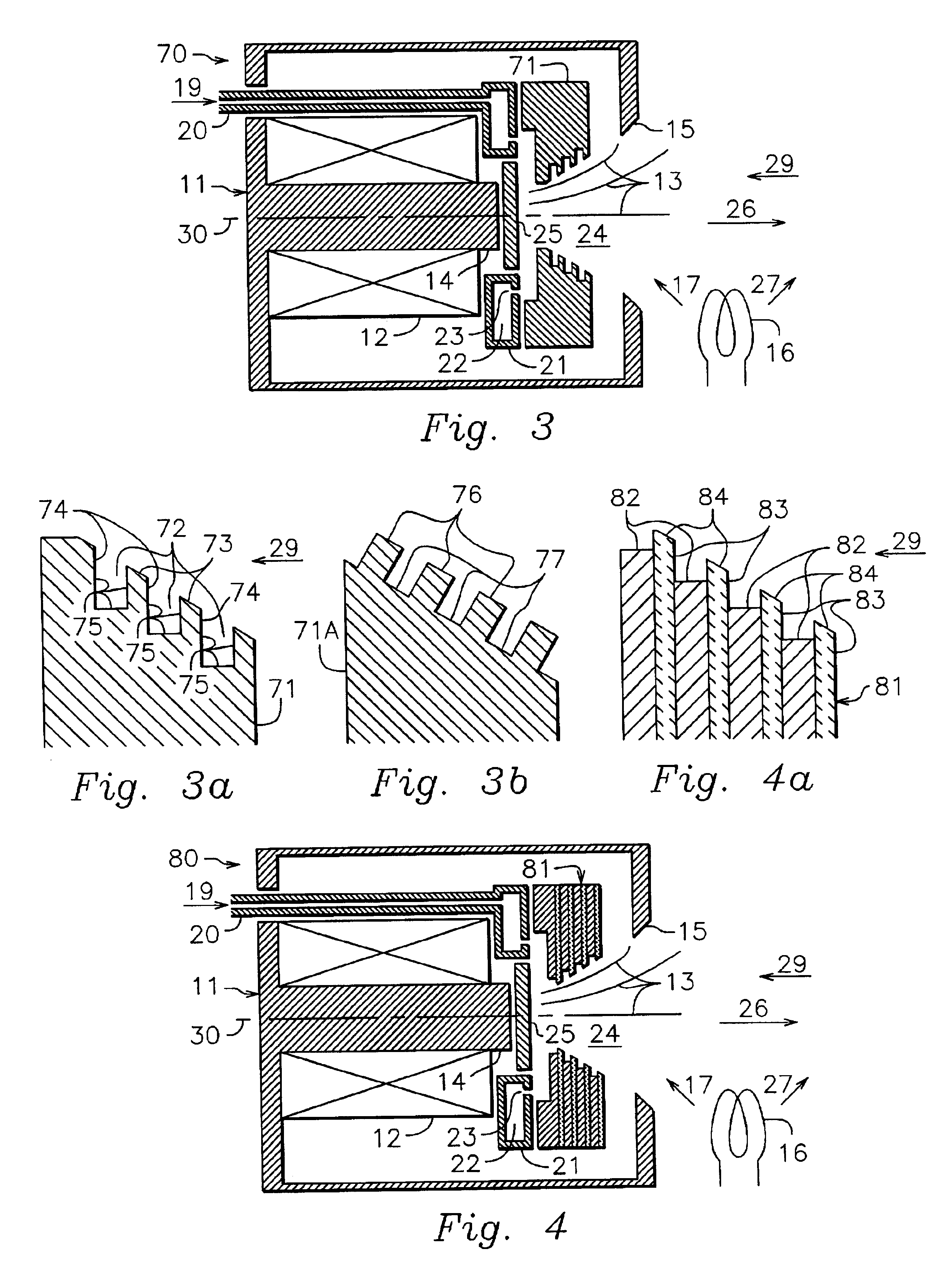Hall-current ion source
a technology of ion source and current, which is applied in the direction of solid cathode, gas-filled discharge tube, ion beam tube, etc., can solve the problems of affecting the operation of ion source, impede the flow of electrons, and poor conductor of anode coating, so as to reduce the effect of operating characteristics, reduce the effect of thermal and/or mechanical effects, and increase the operating time without maintenan
- Summary
- Abstract
- Description
- Claims
- Application Information
AI Technical Summary
Benefits of technology
Problems solved by technology
Method used
Image
Examples
Embodiment Construction
The Mark II end-Hall ion source, originally manufactured by Commonwealth Scientific Corporation and now manufactured by Veeco Instruments Inc., is a prior-art Hall-current ion source with an anode that closely resembles the one shown in FIG. 1. The conical surface of the Mark II anode (corresponding to conical surface 28 in FIG. 1) has an inside diameter of 20 mm and an outside diameter of 36 mm. The Mark II ion source was operated with an argon flow of 100 sccm (standard cubic centimeters per minute). The cathode was the HCES 5000, also first manufactured by Commonwealth Scientific Corporation and later manufactured by Veeco Instruments Inc., was operated with an argon flow of 20 sccm. The sputter target was tantalum and was biased to -500 V relative to the vacuum-chamber ground by a pulsed power supply. An oxygen flow of 50 sccm was directed at the deposition substrate. The experimental configuration of source, target, and deposition substrate was the same as that described by Zhu...
PUM
 Login to View More
Login to View More Abstract
Description
Claims
Application Information
 Login to View More
Login to View More - R&D
- Intellectual Property
- Life Sciences
- Materials
- Tech Scout
- Unparalleled Data Quality
- Higher Quality Content
- 60% Fewer Hallucinations
Browse by: Latest US Patents, China's latest patents, Technical Efficacy Thesaurus, Application Domain, Technology Topic, Popular Technical Reports.
© 2025 PatSnap. All rights reserved.Legal|Privacy policy|Modern Slavery Act Transparency Statement|Sitemap|About US| Contact US: help@patsnap.com



